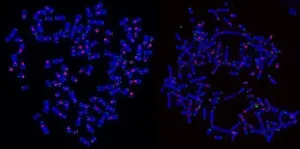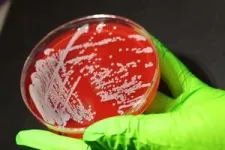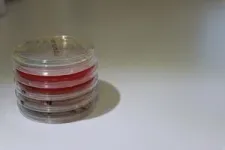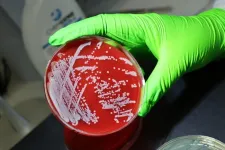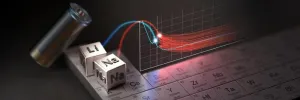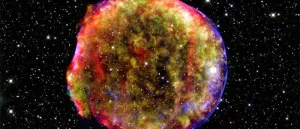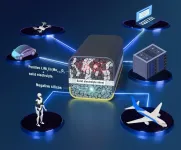(Press-News.org) Scientists at Children’s Medical Research Institute (CMRI) have solved a big mystery in cancer research – why cells die in different ways following radiotherapy. This surprising finding opens up new opportunities to improve treatment and increase cure rates.
The findings were published in Nature Cell Biology by first author Dr Radoslaw Szmyd of CMRI’s Genome Integrity Unit, which is led by Professor Tony Cesare.
Radiation therapy (also called radiotherapy) is a critically important type of cancer treatment. Scientists have struggled for decades to understand why radiation therapy kills cells from the same tumour in different ways. This is important because some forms of cell death are unnoticed by the immune system, while others trigger an immune response that kills other cancer cells. Unleashing the patient’s immune system to kill cancer cells and clear tumours is a major goal of cancer treatment.
“The surprising result of our research is that DNA repair, which normally protects healthy cells, determines how cancer cells die following radiotherapy,” said Prof Cesare. “The DNA inside our cells is constantly experiencing damage, and DNA repair is happening all the time to fix that damage and keep our cells healthy. Now, however, it seems these repair processes can recognise when overwhelming damage has occurred (e.g., from radiotherapy), and instruct a cancer cell how to die.
“When DNA damaged by radiation therapy was repaired by a method called homologous recombination cancer cells died during the process of reproducing – a process called cell division or mitosis. Critically, death during cell division goes unnoticed by the immune system, so it won’t activate an immune response. This is not what we want.
“However, cells that dealt with the radiation-damaged DNA through other DNA repair methods survived the cell division process but did so by releasing byproducts of DNA repair into the cell. To the cell, these repair byproducts look like a viral or bacterial infection. This causes the cancer cell to die in a manner that alerts the immune system. Which is what we do want.”
The team showed that blocking homologous recombination changed the way the cancer cells died – i.e., they now died in a manner that evoked a strong immune response. The team also found that cancer cells that have mutations in BRCA2 – a gene that is very important for breast cancer and which is necessary for homologous recombination – do not die in mitosis following radiotherapy. In addition to solving a major scientific puzzle, these discoveries will make it possible to use drugs that block homologous recombination to force cancer cells treated with radiotherapy to die in a manner that alerts the immune system to the existence of a cancer, (which the immune system had not previously noticed), signalling that the cancer needs to be destroyed.
Prof Cesare credits these breakthroughs to live cell microscope technology that enabled his team to follow irradiated cells for a week following radiation therapy. “Live imaging showed us the full complexity of outcomes following radiation therapy, allowing us to tease out exactly why this occurred.”
Co- project lead, A/Prof Harriet Gee, a radiation oncologist from the Western Sydney Local Health District Radiation Oncology Network, said these findings answer a clinical question that has puzzled the field for 30 years.
“We found that the manner in which tumour cells die after radiotherapy depends on the engagement of specific DNA repair pathways, particularly when radiation is given at very high, focussed doses. This opens up new opportunities to enhance radiation efficacy through combination with other therapies, particularly immunotherapy, to increase cancer cures.’’
Prof Cesare said Dr Szmyd worked for six years on this “incredibly difficult nut to crack’’ and “The perseverance required for a project of this scope is a testament to Radek and the team. Everyone is aware of patients battling cancer. Discovering something like this that has the potential to make a big difference to people’s lives is very rewarding.’’
Authors on the paper include CMRI researchers Sienna Casolin, Lucy French, Dr Anna Gonzalez-Manjon, Dr Melanie Walter, Lea Cavalli, Scott Page, Prof Hilda Pickett, Dr Chrisopher Nelson, and Dr Andrew Dhawan from the Neurological Institute at the Cleveland Clinic in the US and A/Prof Eric Hau from the Westmead Clinical School at the University of Sydney.
END
Mystery solved: how tumor cells die after radiotherapy
2025-01-13
ELSE PRESS RELEASES FROM THIS DATE:
Bacterial survival genes uncovered using evolutionary map
2025-01-13
The most detailed study to date on the mechanisms by which a common type of bacterium, Staphylococcus aureus, adapts to living on the human body could help improve the prevention, diagnosis, and treatment of certain infections.
The study, from the Wellcome Sanger Institute, the University of Cambridge, the Institute of Biomedicine of Valencia (IBV) at the Spanish National Research Council (CSIC) and their collaborators, involved using the genomes of thousands of S. aureus isolates cultured from the human nose and on the skin to investigate which genes are important for the bacteria to adapt and persist.
Published today (13 January) in Nature Communications, ...
Sodium-ion batteries need breakthroughs to compete
2025-01-13
Legions of battery engineers and their supporters have sought for years to build batteries cheaper than the dominant lithium-ion technology, hoping to capture some of lithium-ion’s $50 billion-a-year and growing market. The latest darling contender among researchers, startups, and venture capitalists – sodium-ion batteries – has received much attention after COVID-induced mineral supply chain challenges sent lithium prices on a wild ride. Still, achieving a low-cost contender may be several years away for sodium-ion batteries and will require a set of technology advances and favorable ...
Tumor DNA in the blood can predict lung cancer outcome
2025-01-13
Scientists from the Francis Crick Institute, UCL, UCLH and Personalis have found that a test to detect circulating tumour DNA can predict lung cancer outcome in a Cancer Research UK-funded study.
Circulating tumour DNA (ctDNA) is fragments of DNA released into the blood by tumours. It’s known to be important for disease prognosis but can be difficult to measure precisely.
In research published today in Nature Medicine, Crick and UCL scientists worked with Personalis to test a platform called NeXT Personal, which can detect very small amounts – 1 part per million – ...
New study unveils breakthrough in understanding cosmic particle accelerators
2025-01-13
Scientists have come a step closer to understanding how collisionless shock waves – found throughout the universe – are able to accelerate particles to extreme speeds.
These shock waves are one of nature's most powerful particle accelerators and have long intrigued scientists for the role they play in producing cosmic rays – high-energy particles that travel across vast distances in space.
The research, published today in Nature Communications, combines satellite observations from NASA’s MMS (Magnetospheric Multiscale) and THEMIS/ARTEMIS missions with recent theoretical advancements, offering a comprehensive new model ...
Previous experience affects family planning decisions of people with hereditary dementia
2025-01-13
Living in a family where there is genetic risk for dementia significantly affects choices about having children and how to parent, finds a new study led by UCL researchers.
The research, published in the Journal of Genetic Counselling, interviewed 13 people – both parents and non-parents – who are at risk of developing familial frontotemporal dementia (fFTD).
This form of dementia often begins in mid-life and is characterised by behavioural and personality changes. Children of an affected parent are at 50% risk of inheriting the gene that causes the disease.
People in affected families fall into three groups: people who don’t choose to find out whether ...
Does obesity affect children’s likelihood of survival after being diagnosed with cancer?
2025-01-13
A recent population-based study indicates that among children with cancer, those with obesity at the time of diagnosis may face an elevated risk of dying. The findings are published by Wiley online in CANCER, a peer-reviewed journal of the American Cancer Society.
The retrospective study was based on information from the Cancer in Young People in Canada (CYP-C) database, including all children with newly diagnosed cancer aged 2 to 18 years across Canada from 2001 to 2020. Obesity was defined as age and sex-adjusted body mass index at or above the 95th percentile.
Among ...
Understanding bias and discrimination in AI: Why sociolinguistics holds the key to better Large Language Models and a fairer world
2025-01-13
The language ‘engines’ that power generative artificial intelligence (AI) are plagued by a wide range of issues that can hurt society, most notably through the spread of misinformation and discriminatory content, including racist and sexist stereotypes.
In large part these failings of popular AI systems, such as ChatGPT, are due to shortcomings with the language databases upon which they are trained.
To address these issues, researchers from the University of Birmingham have developed a novel framework for better understanding large language ...
Safe and energy-efficient quasi-solid battery for electric vehicles and devices
2025-01-13
Technological advances have led to the widespread use of electric devices and vehicles. These innovations are not only convenient but also environmentally friendly, offering an alternative to polluting fuel-driven machines. Lithium ion batteries (LIBs) are widely used in electrical appliances and vehicles. Commercial LIBs comprise an organic electrolyte solution, which is considered indispensable to make them energy efficient. However, ensuring safety becomes a concern and may be difficult to achieve with the rising market demand.
While solid-state batteries can help mitigate safety issues, the interface between solid electrodes and the ...
Financial incentives found to help people quit smoking, including during pregnancy
2025-01-13
Rewards and financial incentives are successful methods to help people quit smoking, according to a new Cochrane review co-led by a University of Massachusetts Amherst public health and health policy researcher. For the first time, the researchers also found “high-certainty evidence” that this intervention works for pregnant people as well.
A previous review of studies, also published in the Cochrane Database of Systematic Reviews, found moderate certainty that financial ...
Rewards and financial incentives successfully help people to give up smoking
2025-01-13
Offering rewards helps people to stop smoking, with success rates continuing long after incentives have stopped.
The new research, led by the University of East Anglia, also explored whether incentives were effective in helping pregnant women to give up smoking.
While previous research found rewards played a moderate role in encouraging pregnant women to quit smoking, this up-to-date study found there is now “high certainty evidence” that such schemes are successful in this ...
